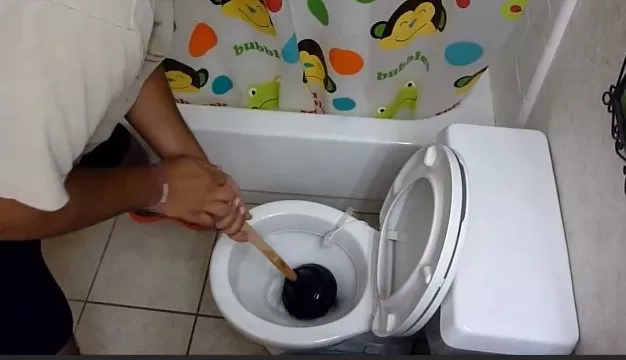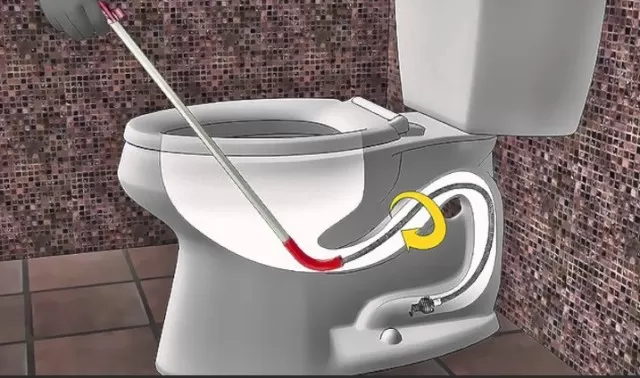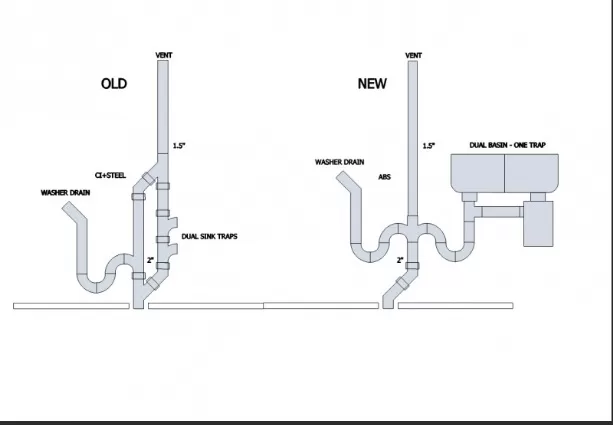Toilet Troubles Demystified: Fixing the Baffling Bubbles. Don’t let bothersome gurgling or bubbling sounds from your toilet go unaddressed, as they can be indicative of underlying issues. Follow these troubleshooting techniques to identify and resolve the source of these annoying noises.
First, Attempt to Plunge the Toilet with Proper Drain Sealing

To tackle a light-to-moderate clog causing gurgling sounds, try using a suitable plunger, like the JS Jackson accordion-style plunger recommended in our comprehensive guide.
Before plunging, seal off the drains of nearby sinks, showers, and tubs using duct tape. By doing so, you prevent the pressure generated during plunging from escaping through other drain fixtures, increasing the chances of dislodging the clog.
Fit the plunger head tightly over the drain hole and perform 10 to 15 firm pumping motions. If the gurgling persists, move on to the next steps.
Check with Neighbors and Report Community Sewer Issues
If your neighbors are experiencing similar toilet gurgling or bubbles, it could indicate a clog in the community sewer line.
Contact your municipal sewer authority and inform them about the problem. They will dispatch someone to inspect the sewer main, and if the issue lies there, they will likely cover the repair expenses.
Utilize a Toilet Snake for Stubborn Clogs

When plunging fails to resolve the problem, a toilet snake (also known as a plumber’s snake or auger) can be highly effective.
This tool features a long cable with cutting blades designed to tackle tough clogs. For minor clogs within a limited distance, a manual toilet auger can be inserted into the toilet bowl and cranked to cut through the clogs, typically within a range of 5 to 15 feet.
For deeper clogs, consider upgrading to a motorized model or renting a medium-sized drain cleaner from a home improvement store. While renting equipment may cost around $40 to $50, calling a plumber for snaking the lines could be more expensive, especially if additional repairs are required.
Auger the Lines from the Sewer Cleanout for Deeper Clogs
In cases where the clog is located deep in the sewer line, it may be necessary to auger the lines from the sewer cleanout.
The cleanout is typically situated just outside your home, and its location can be found by checking your basement or crawlspace. After uncovering the cleanout pipe, use an adjustable wrench to remove the cap. Then, insert the auger into the cleanout pipe and allow it to work its way down the line, cutting through stubborn clogs. If the toilet gurgling ceases, you have successfully eliminated the sewer clog; if not, proceed to troubleshoot the vent stack.
Inspect and Clear the Vent Stack

To ensure proper airflow and prevent air locks in the drainpipes, it’s important to check and clear any obstructions in the vent stack.
If comfortable, you can perform this task by accessing the roof. Securely attach a powerful flashlight to a rope using duct tape, turn it on, and insert it into the uncapped vent stack pipe on the roof.
By examining the pipe, you may identify clogs within a certain distance from the top. Leaves, debris, or small animal carcasses are common causes of vent stack clogs.
Clearing shallow clogs can be attempted using a straightened wire coat hanger, while deeper clogs may require running water from a garden hose to dislodge the obstruction and flush it out through the sewer.
*The information is for reference only.